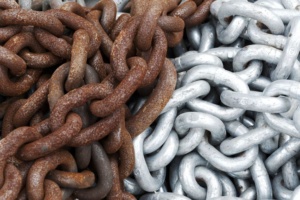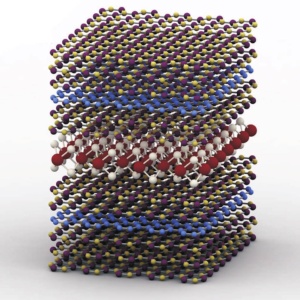The Computational Spintronics Group works closely with industry to deliver materials solutions across multiple technology sectors, including energy, aerospace, electronics and data storage. The group has access to a range of funding mechanisms, which are tailored to the specific industry demand, and can avail of the expertise of a team of 20 researchers. This ranges from high-throughput methods to advanced electronic structure theory, to quantum transport and multiscale approaches. The level of the engagement with any given industry partner is defined by the problem and by the company best practice. Typically monthly meetings take place between our research team and the industry partner. Here are a few on-going projects in this area:
Large-scale design of corrosion-resistant metallic alloys
 Corrosion is problem affecting multiple industry sectors, going from the ambient corrosion of electronic circuits to that of the harsh environments of the petrochemical industry. Here we combine high-throughput electronic structure theory (at the DFT level) with the development of efficient descriptors to design novel corrosion-resistant metallic alloys. The strategy is to identify a number of physical/chemical parameters (the descriptors), which are easy to calculate, they are specific of a given chemical agent but are defined only by the properties of the metal. This means that the electronic structure of the metallic alloy, together with some structural information, is enough to assess whether a metal is prone to corrosion against a particular chemical agent. Such descriptors are run against large datasets of materials properties and allow us to identify a number of potential candidates. Then more thorough and complete calculations are performed for those candidates only. These include the computation of the adsorption energy of the adsorbate, of the reaction paths and, if needed, full molecular dynamics simulations are performed.
Corrosion is problem affecting multiple industry sectors, going from the ambient corrosion of electronic circuits to that of the harsh environments of the petrochemical industry. Here we combine high-throughput electronic structure theory (at the DFT level) with the development of efficient descriptors to design novel corrosion-resistant metallic alloys. The strategy is to identify a number of physical/chemical parameters (the descriptors), which are easy to calculate, they are specific of a given chemical agent but are defined only by the properties of the metal. This means that the electronic structure of the metallic alloy, together with some structural information, is enough to assess whether a metal is prone to corrosion against a particular chemical agent. Such descriptors are run against large datasets of materials properties and allow us to identify a number of potential candidates. Then more thorough and complete calculations are performed for those candidates only. These include the computation of the adsorption energy of the adsorbate, of the reaction paths and, if needed, full molecular dynamics simulations are performed.
Design of 2D van der Waals heterostructures for multiple applications
2D layered compounds (e.g. graphene, h-BN, MoS2, etc.) form a class of materials comprising about 500 known members. These can be exfoliated into single-layer form with a number of physical-chemical processes. Among those liquid-phase processing allows large throughput so that a vast library of 2D compounds is available as a materials platform for multiple technologies. Most importantly, since the 2D layers are kept together by weak van der Waals interaction, which are little chemical sensitive, one can design heterogeneous stacks of any kind, meaning that the potential number of 2D heterogeneous materials is virtually infinite. Our research program aims at identifying the most promising 2D heterostructures, tailored for given application such as sensing, solar energy harvesting and lubrication. Also in this case the strategy is that of constructing a multi-scale theory where the accurate electronic structure of the building blocks 2D single layers is combined with semi-classical and empirical models to describe the composites. Furthermore, we are developing a full library of force fields describing the mechanical and thermal properties of such materials set and their heterostructure.
